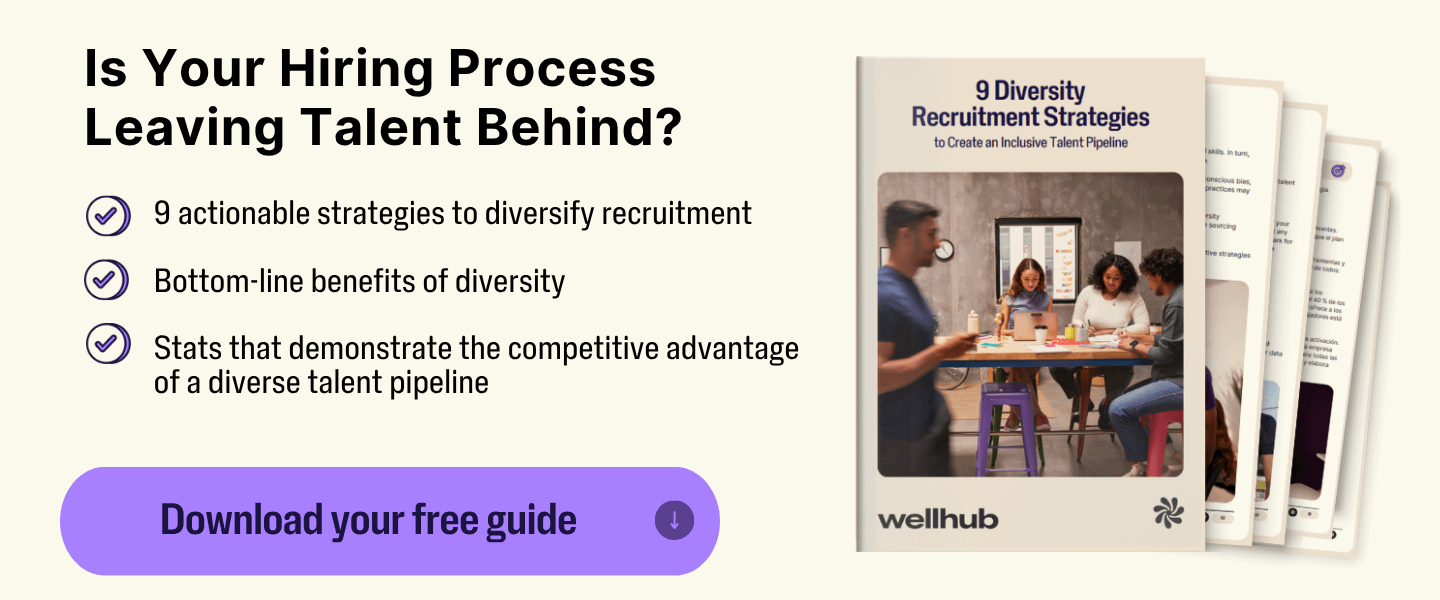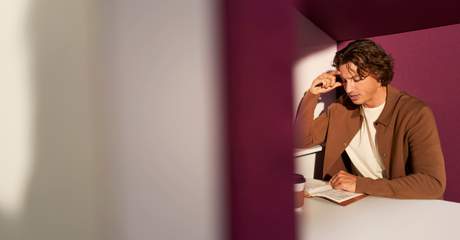How to Respond When Candidates Decline a Job Offer After Accepting
Last Updated Nov 25, 2025

Key Takeaways
- Your first response to a rescinded acceptance sets the tone for your employer brand. A calm, warm acknowledgment shows candidates that your culture stays steady under pressure. This simple professionalism protects your reputation and keeps the door open for insights that can strengthen your hiring process.
- Asking for feedback turns a lost hire into actionable intelligence. A brief, guilt-free question can reveal patterns like long timelines or misaligned expectations. Even partial insights help you diagnose process gaps, while thoughtful restraint around counteroffers prevents repeating the same cycle.
- Rapid internal communication and pipeline reactivation minimize the operational impact. Notifying your hiring manager right away helps reset expectations and maintain trust. Reconnecting with strong runner-up candidates preserves momentum and often leads to a faster close than restarting the search from scratch.
- Analyzing offer timelines, contracts, and candidate patterns reveals where reneges originate. Reviewing delays, legal clarity, and the experiences of both stayers and leavers helps you pinpoint friction points. These insights strengthen your hiring system and reinforce culture at a time when wellbeing expectations are rising.
- Building an “offer-sticky” experience reduces second thoughts and boosts long-term confidence. Transparent compensation, intentional pre-boarding, and realistic insights into team culture give candidates a stable bridge from acceptance to Day One. When candidates feel supported, informed, and connected, the likelihood of withdrawal drops dramatically.
You finally landed the perfect candidate. Offer accepted, start date locked in, manager excited. Then—bam. They back out.
That email or phone call feels like a gut punch. It doesn’t just derail plans. It shakes team morale, upends timelines, and leaves you scrambling to fill a critical gap. And the worst part? You often don’t get much warning.
But here’s the thing: how you respond in the first 24 hours can make or break your hiring momentum. A clear-headed approach protects your employer brand, keeps internal trust intact, and reboots your pipeline faster than you'd expect.
Follow these steps to stay composed, learn from the loss, and bounce back stronger than before.

How to Respond in the Immediate Aftermath of a Rescinded Acceptance
A calm, clear-eyed playbook for your first 24 hours
How you respond in the next few minutes can protect your employer brand, give you valuable insights, and reopen your hiring pipeline faster than you think.
Let’s walk through exactly what to do.
Step 1: The Golden Rule of Response: Maintain Professionalism
When a candidate reneges, your instinct might be frustration. Totally normal. But your reaction needs to be pure composure. This moment broadcasts who you are as an employer — and candidates talk.
A calm, gracious response tells the candidate (and anyone they mention you to) that your culture is steady and respectful under pressure.
Your move:
- Thank them for letting you know, even if the timing is tough.
- Reassure them that you appreciate their transparency.
- Keep your tone warm, brief, and neutral.
This is the HR version of taking a deep breath before you speak — and it pays dividends.
Step 2: The Crucial Follow-Up: Seek Data, Not Guilt
Once you’ve acknowledged their decision, it’s time to collect the most valuable thing they can give you now: insight.
You’re not trying to change their mind. You’re gathering light so you can fix what’s causing shadows in your process.
A simple, powerful question: “Before we close the loop, was there anything on our end we could have done differently?”
You might only get a vague answer, and that’s okay. Even broad themes (“the timeline felt long,” “another offer felt more aligned”) help you spot patterns. And once in a while, you’ll get gold — specifics you can take straight into process improvements.
One more note: Counteroffers should be used sparingly. Only consider them if the candidate clearly expresses that compensation was the sole deal-breaker. Otherwise, you risk restarting a cycle that ends in disappointment again.
Step 3: Internal Damage Control and Your Next Step
Once you hang up the phone, your next step is clarity.
Tell your hiring manager immediately. This keeps them from being blindsided and lets them reset timelines with their team. It also reinforces trust — because no one likes surprises when headcount is on the line.
Then, shift quickly into pipeline reactivation mode.
Re-engage your “B-List” finalists — the strong candidates who were almost a yes. These folks are often thrilled to hear from you again. The key is your framing.
Try positioning it as: “This role has reopened unexpectedly, and we’d love to revisit your interest.”
It preserves dignity and momentum. And it often results in a faster close than starting from scratch.
Email Scripts HR Can Send When a New Hire Changes Their Mind
The Gracious Acknowledgment (Immediate Response)
Purpose: Maintain professionalism, protect the employer brand, and keep the door open.
Subject: Thank You for Letting Us Know
Hi [Name],
Thank you for reaching out and sharing your decision. While we’re disappointed we won’t be moving forward together, we truly appreciate your transparency.
If you’re open to it, I’d love to hear if there’s anything in our process or the role that influenced your decision. Insights like these help us continue improving the experience for every candidate.
Wishing you all the best in your next step — and please feel free to stay in touch.
Warmly,
[Your Name]
[Title]
The Insight Request (Follow-Up After Their Initial Message)
Purpose: Gather root-cause information without pressure or guilt.
Subject: Quick Follow-Up
Hi [Name],
Thank you again for letting us know. If you have a moment, I’d appreciate any high-level feedback on what ultimately influenced your change in direction. Even a sentence or two is incredibly helpful as we continue strengthening our hiring process.
No pressure at all — and thank you in advance if you’re able to share.
All the best,
[Your Name]

The Counteroffer-Not-Appropriate Response
Purpose: Close the loop kindly when you know a counteroffer isn’t the right move.
Subject: Thank You
Hi [Name],
Thank you for the update. I completely understand your decision and appreciate the transparency. While we aren’t able to adjust the offer at this time, I want to express our appreciation for the time you spent with our team and the thoughtful conversations throughout the process.
Wishing you success in your next chapter, and thank you again for your professionalism.
Warm regards,
[Your Name]
The Counteroffer-Consideration Response (When It Is Appropriate)
Purpose: Reopen the conversation without pressure or urgency.
Subject: A Quick Check-In
Hi [Name],
Thank you for letting me know about your decision. Before we close the loop, I’d love to understand a bit more about what changed for you. If compensation or a specific part of the package played a role, I’m happy to explore whether we have room to revisit anything on our end.
If not, no worries at all — your clarity is appreciated, and we want you to land in the role that feels right.
Thanks again,
[Your Name]
The “Reopening the Role” Email to Runner-Up Candidates
Purpose: Quickly re-engage your next-best candidates without making them feel like a fallback.
Subject: Opportunity Reopened on Our Team
Hi [Name],
I hope you’re doing well! I’m reaching out with some unexpected news — the [Role Title] position on our team has reopened, and we immediately thought of you.
Our team was impressed by your background and the perspective you’d bring to the role. If you’re still exploring opportunities, we’d love to reconnect and continue the conversation.
No pressure at all — just let me know if you’d like to set up a quick call.
Best,
[Your Name]
The Manager Notification Email
Purpose: Deliver the news clearly and outline next steps.
Subject: Update on [Candidate Name]
Hi [Manager],
I wanted to let you know that [Candidate Name] has decided to withdraw their acceptance for the [Role Title] position.
I’ve thanked them for the update and requested high-level feedback about their decision. In the meantime, I recommend we immediately reconnect with our runner-up candidates to maintain momentum. I can begin outreach today and will keep you updated on who is still available.
Let’s regroup this afternoon to align on next steps.
Thanks,
[Your Name]
Mitigation and Analysis: What You Can Learn from a Lost Hire
A rescinded offer hurts — no doubt about it. But it also gives you something incredibly valuable: a moment to pause, rewind, and understand what really happened. Think of this section as your recruitment “post-game review,” helping you turn a frustrating situation into future precision.
Let’s break this down step-by-step.
Reviewing the Offer Timeline
Start by mapping the timeline from offer to acceptance to planned start date. This gives you clarity on where momentum might have slowed.
Here’s the pattern many HR leaders discover: long gaps equal more risk. Anything beyond four weeks provides ample time for competing offers to roll in or for a candidate’s emotional excitement to cool.
What you can do:
- Shorten decision windows between final interview and offer.
- Remove delays in approvals, background checks, and contract turnaround.
- Set a standard offer-to-start SLA and align all stakeholders around it.
Even small compressions in the timeline can materially reduce reneges — and help candidates feel supported and confident from the moment they say “yes.”
Contract and Legal Review (Protecting the Organization)
After every renege, take a fresh look at your offer letter and contract templates. Think of it as your legal pulse-check.
Key questions to ask with your legal partner:
- Are all conditions — like background checks or drug screenings — clearly defined as prerequisites?
- Is your at-will statement crystal clear and state-compliant?
- Do executive roles require special clauses such as non-competes or relocation?
- Are there ambiguous sections that might create hesitation or misinterpretation?
Clean, concise, and transparent documents build trust. They also reduce situations where candidates feel uncertain or confused — which is often an unspoken driver of reneges.
Surveying Stayers vs. Leavers
One of the most underrated sources of insight is right in front of you: the new hires who did show up. Their experience tells you what’s working.
What to collect:
- Why they stayed excited during the pre-start period
- Any hesitations they had — and what reassured them
- What communication from your team felt motivating
Pair this with tracking your renege rate over time. Break it down by:
- Role
- Department
- Seniority level
- Recruiter or hiring manager
- Offer-to-start window length
Patterns will likely emerge. Often, reneges cluster around one specific bottleneck or experience gap.
This kind of reflection does more than improve your process — it also strengthens the culture candidates walk into. And that matters, because only 17% of employees strongly agree that wellness is truly ingrained in their company culture, according to Wellhub’s 2026 State of Work-Life Wellness Report. And a poor wellbeing culture can keep more future hires out the door: 85% of employees would only consider working for companies that care about their wellbeing.
Improving the candidate journey is one powerful way to move that number in the right direction.
Future-Proofing: Build an “Offer-Sticky” Candidate Experience
Imagine your candidate experience as a bridge — one that carries people from excitement (“Yes, I accept!”) to confidence (“I can see myself thriving here.”). That bridge can feel rock solid… or it can wobble.
Your goal is to build a process that feels so supportive, transparent, and energizing that opting out doesn’t even cross a candidate’s mind
Let’s walk through how to build that stickiness step by step.
Total Compensation Transparency
When candidates understand the true value of their offer, they feel more confident in their decision — and less likely to second-guess it when competing offers appear.
Most reneges happen because the candidate realizes (or believes) another offer creates a better long-term path. Transparent, comprehensive compensation conversations help keep your role competitive and your relationship strong.
How to “sell the full value” of your offer:
- Break down equity, retirement match, and healthcare contributions in plain language.
- Monetize PTO, holidays, and wellness stipends.
- Outline professional development budgets and learning opportunities.
- Paint a clear picture of the role’s trajectory and internal mobility pathways.
Candidates want to visualize their future — and you’re helping them do exactly that.
Proactive Engagement (Pre-boarding)
This is where emotional investment takes shape. The period between acceptance and Day One is fragile. When it’s quiet, candidates drift. When it’s warm and intentional, they stay all in.
Best practices to create a sticky pre-boarding experience:
- Hiring Manager Touchpoint: A 10-minute “We’re excited you’re joining us” call does wonders.
- Team Welcome: Invite them to a casual group coffee chat or virtual meet-and-greet.
- Welcome Kit: Send swag or a small personalized gift — something that makes the decision feel real.
- Resignation Coaching: Offer guidance on counteroffers, emotional preparation, and timing. Many candidates fear this moment, and your support builds trust.
These touches don’t add burden — they add belonging.

Optimizing the Interview Process for Fit
Fit concerns are one of the most common unspoken reasons candidates quietly walk away. The good news: you can uncover these issues earlier by designing an interview process where candidates get a deeply realistic view of what it’s like to work with you.
Make the interview process a two-way street:
- Give candidates access to multiple employees doing similar roles.
- Provide a real “day in the life” breakdown with challenges included.
- Ask them early: What are your non-negotiables?
- Share how your organization supports wellbeing — something crucial when four out of five workers say employers have a responsibility to help them tend to their wellbeing.
This transparency doesn’t scare candidates away — it builds loyalty. They understand the job, they understand your culture, and they understand how you’ll support them as a whole person.
A Supportive Culture Helps Candidates Stay Committed
Rescinded offers damage team morale, productivity, and employer brand. They often trace back to a lack of connection, confidence, or clarity during the offer and pre-boarding stages.
A strong wellbeing program helps candidates feel valued from day one — even before they start. It shows your organization cares about more than output. Employees with a wellbeing program are more than twice as likely to say HR genuinely cares about their wellbeing. That trust can make the difference between a “yes” and a “never mind.”
Wellhub supports this by offering access to thousands of fitness partners, mental health resources, and wellness tools that build a culture of trust and support.
Speak with a Wellhub sales representative to build a candidate experience that turns offers into day-one arrivals.

Company healthcare costs drop by up to 35% with Wellhub*
See how we can help you reduce your healthcare spending.
[*] Based on proprietary research comparing healthcare costs of active Wellhub users to non-users.
Category
Share

The Wellhub Editorial Team empowers HR leaders to support worker wellbeing. Our original research, trend analyses, and helpful how-tos provide the tools they need to improve workforce wellness in today's fast-shifting professional landscape.
Subscribe
Our weekly newsletter is your source of education and inspiration to help you create a corporate wellness program that actually matters.
Subscribe
Our weekly newsletter is your source of education and inspiration to help you create a corporate wellness program that actually matters.
You May Also Like

142 Farewell Messages to Coworkers: Examples for Every Scenario | Wellhub
Get over 140 perfect farewell messages for coworkers. Includes short, funny, and heartfelt examples, plus notes for a boss, retiring colleague, or laid-off teammate.

What HR Needs to Know About Business Downsizing | Wellhub
Deal with workforce reductions effectively with expert guidance on downsizing strategies, legal compliance, and compassionate employee support.

Employee Transition Plans: Handle Turnover Like a Pro | Wellhub
Create effective employee transition plans with these tips and templates. Improve onboarding, offboarding, and role changes to improve retention.